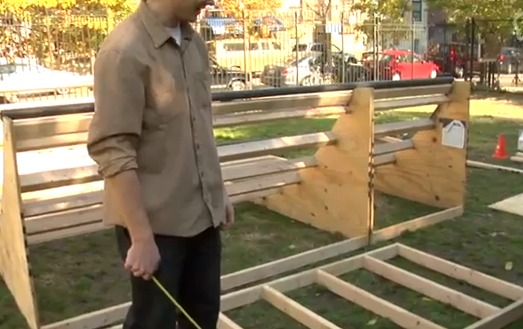Build a ramp
Build a ramp using cardboard, books, and tape to test how slope affects how fast toy cars or marbles travel while measuring distance and time.



Step-by-step guide to build a ramp to test how slope affects toy car or marble speed
How to build a ramp
Step 1
Gather all the materials listed and bring them to a clear floor space.
Step 2
Clear a flat area on the floor so you have room for the ramp and a run-out.
Step 3
Prop one end of the cardboard on a stack of books to make an incline ramp.
Step 4
Use tape to secure the cardboard to the top book and the floor so the ramp will not slide.
Step 5
Measure the length of the ramp along the cardboard from top to bottom and write the length in your notebook.
Step 6
Measure the vertical height from the floor to the top edge of the ramp and write the height in your notebook.
Step 7
Calculate the slope by dividing the height by the ramp length and write the slope value in your notebook.
Step 8
Put a piece of masking tape or a marker line at the top edge to make a clear starting line.
Step 9
Measure 100 cm from the bottom of the ramp and stick a piece of tape there to make a finish line (if you cannot fit 100 cm use the farthest distance you can and write that distance).
Step 10
Place your toy car or marble touching the starting line at the top of the ramp.
Step 11
Ask a helper to stand by the finish line with the stopwatch ready to start and stop.
Step 12
Release the car or marble without pushing it while the helper starts the stopwatch the instant you let go.
Step 13
Have the helper stop the stopwatch the instant the car or marble crosses the finish line tape.
Step 14
Write the time in your notebook and calculate the speed by dividing the distance (the finish distance you measured) by the time; record the speed and any notes.
Step 15
Repeat Steps 3–14 two more times using different ramp heights to collect results for different slopes and then share your finished creation and results on DIY.org.
Final steps
You're almost there! Complete all the steps, bring your creation to life, post it, and conquer the challenge!


Help!?
What can we use if we don't have the cardboard, a stack of books, masking tape, or a stopwatch?
If you don't have cardboard use sturdy poster board, thin plywood, or folded corrugated boxes for the ramp, replace the stack of books with a small stool or shoebox, use painter's tape or duct tape to secure the ramp, and use a smartphone timer instead of a stopwatch.
My ramp keeps sliding or the car veers off—what should I check and fix?
Follow Step 4 by taping the cardboard firmly to the top book and the floor, add weight to the book stack or put a non‑slip mat under the base, make sure the ramp edges are aligned straight, and practice releasing the toy car at the masking‑tape starting line without pushing for consistent times.
How can I change the activity to suit younger children or older kids?
For younger children simplify Steps 5–7 by measuring together and using larger toy cars while counting seconds aloud, and for older kids have them calculate slope in their notebook, run multiple trials at different heights, and compare speeds numerically.
How can we extend or personalize the experiment after completing the three trials?
Decorate the cardboard ramp, test different surface materials (like sandpaper, foil, or cloth) and different toys to study friction and how slope affects speed, record and graph the results in your notebook, and then share photos and findings on DIY.org as in Step 15.
Watch videos on how to build a ramp to test how slope affects toy car or marble speed
Ramps: A Super, Simple Machine! - #sciencegoals
Facts about forces and motion
📦 Folded and taped cardboard can be very strong and smooth, making it a great, low-cost material for building ramps.
🎯 Small changes like the ramp surface (smooth tape vs rough cardboard) or wheel condition often affect speed more than small weight changes.
📏 Steeper ramps make toy cars and marbles accelerate faster, so they'll travel the same distance in less time.
🛷 The inclined plane is one of the six classical simple machines — people have used ramps for moving heavy loads since ancient times!
🧱 You can change a ramp's angle quickly by stacking books—the taller the stack, the steeper the slope.
How do I build a simple ramp to test how slope affects toy car or marble speed?
What materials do I need to build a cardboard ramp experiment?
What ages is the ramp slope experiment suitable for?
What are some variations and safety tips for the ramp slope activity?


One subscription, many ways to play and learn.
Only $6.99 after trial. No credit card required



